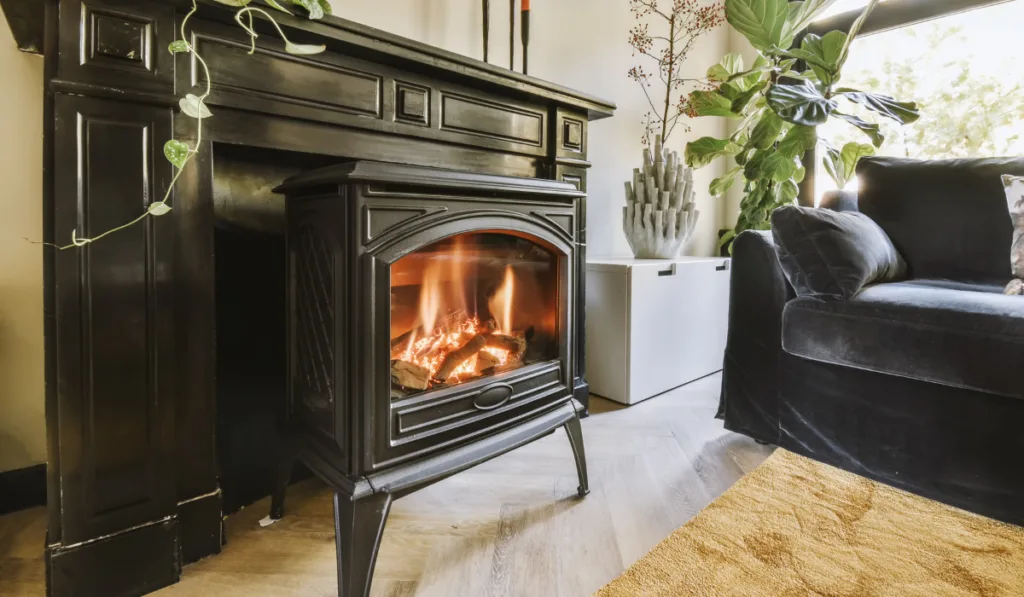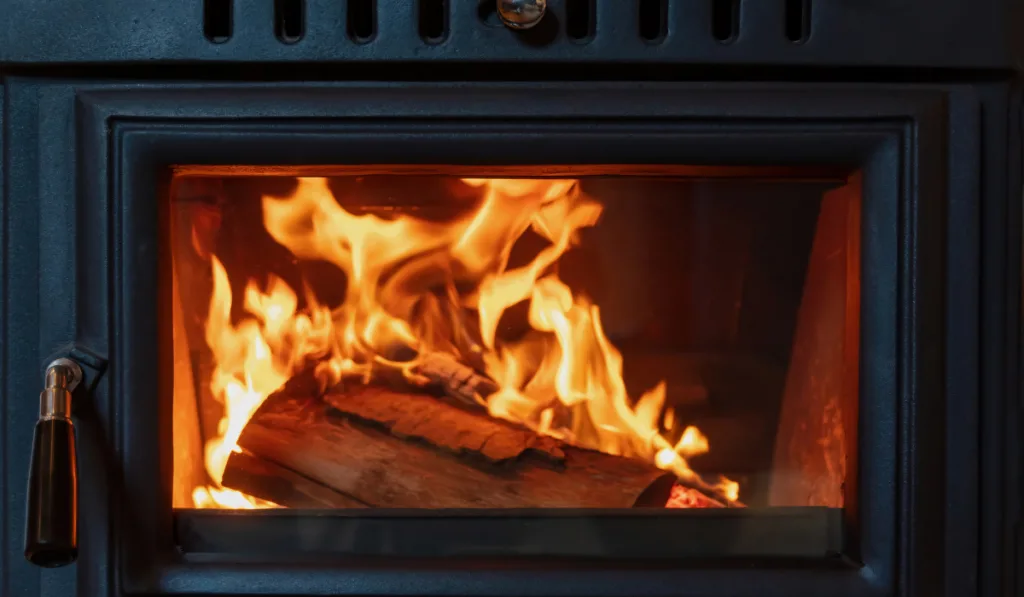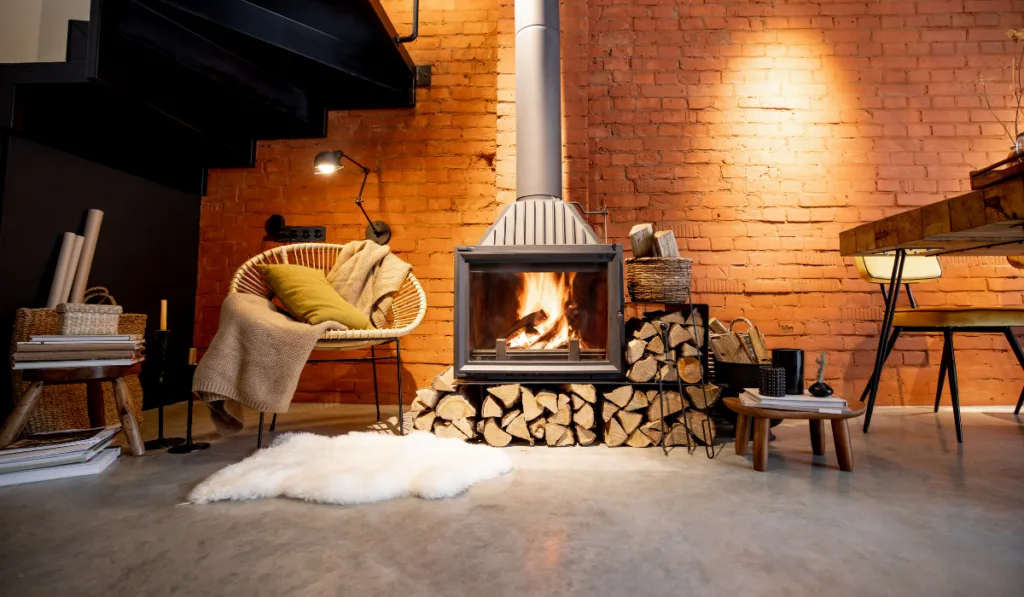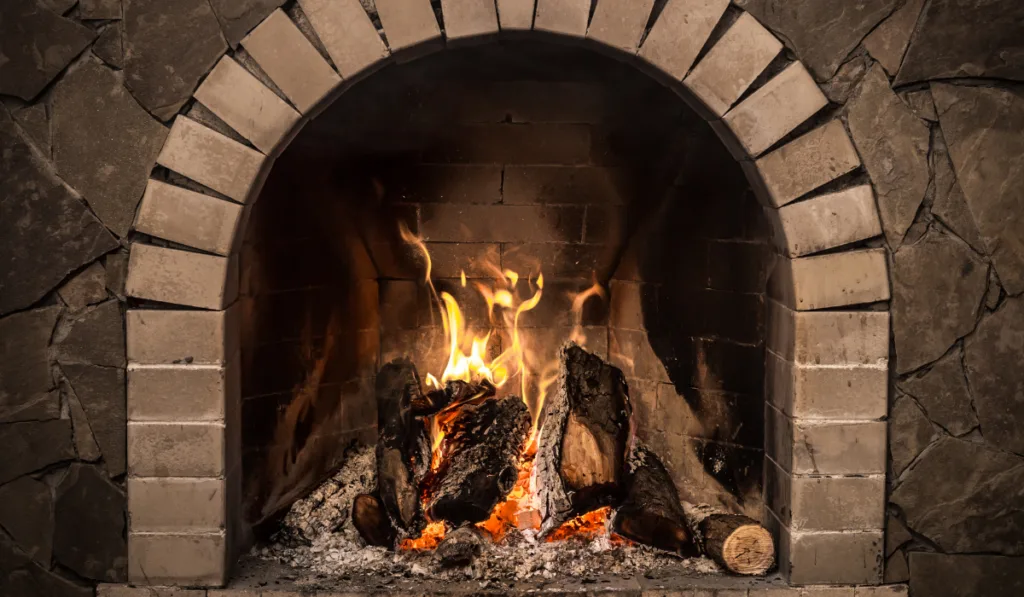There is nothing quite like a fire to heat up your home during those cold, wintry months, but which should you choose: a wood-burning stove or a fireplace?
Both are beautiful home features, but there are some differences that might help you and your bank account!
Wood-burning stoves burn wood more efficiently than fireplaces and require less wood. The closed structure of the stove poses less risk for flames to escape than a fireplace – unless it is enclosed. Both require annual maintenance and are cozy, effective ways of heating your home in the winter and can increase your home value between $1,000 and $4,999.

The choice between a wood-burning stove and a fireplace can impact your installation and maintenance costs, but in turn, they can increase the value of your home and save you money on your energy bill.
Both provide a communal hang-out spot for your family in a toasty atmosphere. If you have a wood-burning stove, you might miss being able to gaze into the flames of an open-hearth fireplace, but there might be some advantages to the stove that you weren’t aware of.
So, is there a clear winner? Let’s find out.
Table of Contents
Does a Wood-Burning Stove or Fireplace Increase Home Value?
First things first, let me define what each feature is.
A fireplace is a built-in structure typically forming an alcove and is furnished with a flue that expels smoke, ventilates the fire with oxygen, and is encased by the chimney. It can possess a more natural aesthetic as the structure seems part of the house and is typically composed of heat-resistant materials such as brick or stone, bringing a grand aesthetic to your home.
A wood-burning stove is a stand-alone unit that you can fit into or in front of a fireplace but does not need to be fitted as such. It is similarly composed of a chimney, firebox, and ventilation passage or pipe.
Fitting a wood-burning stove into a fireplace is convenient as you can make use of the pre-existing chimney.
If you do have access to a chimney, then your installation costs could range from $1,200-$3,500, but if you don’t and need to have a chimney fitted, then you are looking at higher costs between $2,300 to $7,000.
However, you can install a wood-burning stove without a chimney but with a twin flue system (read below).
While installing a wood-burning stove is not cheap, you could see a return on your investment relatively quickly as:
- You won’t be so dependent on central heating in winter
- Wood is cheaper than oil, propane, or electricity
- Studies show that wood-burning stoves and fireplaces alike can increase your home’s value on average between $1,000 and $4,999!

Can They Save You Money?
If you live in a cold climate and require heating throughout the winter period, then a wood-burning stove, like a fireplace, can help you heat up your house without relying too heavily on central heating.
In addition to its heat, both home features create a cozy atmosphere and offer a communal point in the house where your family can warm up and spend time together.
Wood-burning stoves may not be as ubiquitous as fireplaces, but they are a worthy competitor.
For example, wood-burning stoves convert wood into heat more efficiently in their compact firebox than fireplaces due to their open and not entirely contained structure.
This means that a wood-burning stove can help heat up your house during those winter months and help cut costs as you won’t need to fire up your central heating to full blast.
To put this in numbers, wood-burning stoves “approved by the U.S. Environmental Protection Agency” convert 70% of “the wood’s organic matter to heat” whereas fireplaces only convert 20-25%.
As a result, wood-burning stoves produce up to three times more heat than fireplaces from far less wood.
This will additionally decrease your costs and cut down on your wood consumption, making wood-burning stoves more environmentally friendly than fireplaces.

Do I Need a Chimney for a Wood-Burning Stove?
Many homes nowadays are not furnished with a chimney, especially when it comes to apartments.
The good news is that you do not need a chimney for a wood-burning stove. You can counteract the absence of a chimney with a twin flue system.
The flue is an essential component of the wood-burning stove as it expels smokes and ventilates the fire through a passageway of insulated stainless-steel pipes.
One pipe is fitted inside another pipe as the flue needs to stay warm for the smoke to rise from your stove and be expelled.
The twin flue system may be fitted externally (scaling the outside of your building) or internally (incorporated into the infrastructure of your home from stove to roof).
There are advantages and disadvantages to both fittings. The external flue system is less intrusive and uses outside space, so you won’t have to sacrifice any in your home.
However, as the flue needs to exit your wall to access the outside, you will need to secure its entry point. An external flue might have to skirt exterior building features such as a fire escape, which can incur extra costs.
On the other hand, the internal flue system stayed warm more easily due to it being located inside your home. This can help the whole process run more smoothly and make the stove easier to use.
Although, fitting the twin flue system might take up space in your home, which you might not be willing to sacrifice.
Whether you decide to fit an external or internal twin flue system, you will still be able to enjoy the warmth of a wood-burning stove in winter regardless of whether or not you have access to a chimney!

Safety Concerns
Fireplaces and wood-burning stoves should always be monitored as they are housing an open flame. The alcove structure of a fireplace is potentially riskier than an enclosed wood-burning stove unless there is the hearth is also enclosed with, for example, a glass panel.
Due to the efficiency of wood-burning stoves, they can burn creosote (oil applied to wood to preserve it) and other byproducts more effectively.
On the other hand, fireplaces are less likely to burn off all the byproducts, which can lead to a creosote buildup in your chimney resulting in a potential fire hazard.
This can be avoided by regular maintenance and cleaning. Owners of wood-burning stoves and fireplaces are both advised to:
- Make sure kids and pets aren’t close to the open fire
- Use dry, quality wood to avoid excess smoke or potentially harmful byproducts being released
- Install and regularly check carbon monoxide detectors
- Clean your fireplace and wood-burning stove regularly. Fireplaces will need more maintenance due to potential creosote buildup in the chimney
- Hire a professional to conduct an annual checkup before the winter period
Safety concerns exclusive to wood-burning stoves:
- Starting a fire in your wood-burning stoves should never be expedited with lighter fluid, gasoline, or other fire accelerants
- Only burn wood in a wood-burning stove and not foreign objects
- Ensure that there is a switch lock so that children may not open the stove
- If your wood-burning stove operates with a remote control, then make sure that this is out of children’s reach

Conclusion
To sum up, wood-burning stoves are more efficient at burning wood and require less wood to produce heat. This means they are more economical than fireplaces as you will need less wood, making them a more environmentally friendly option than their counterparts.
It seems that fireplaces trump wood-burning stoves in terms of aesthetics and atmosphere. However, they fall short on efficiency, wood-consumption, and maintenance.
Both features can increase your home value from anywhere between $1,000 and $4,999! In turn, you will also receive a cozy atmosphere provided by a beautiful home feature that can cut your energy costs during winter as you will not have to rely so heavily on your central heating.
There are potential hazards innate to any heating feature, but regular maintenance (you’ll need to do more if you have a fireplace to avoid creosote buildup) and an annual checkup conducted by an expert should minimize your risk significantly. What choice will you be making?
Resources:
- https://www.cuttingedgefirewood.com/news/fireplace-vs-wood-burning-stove-whats-the-difference/
